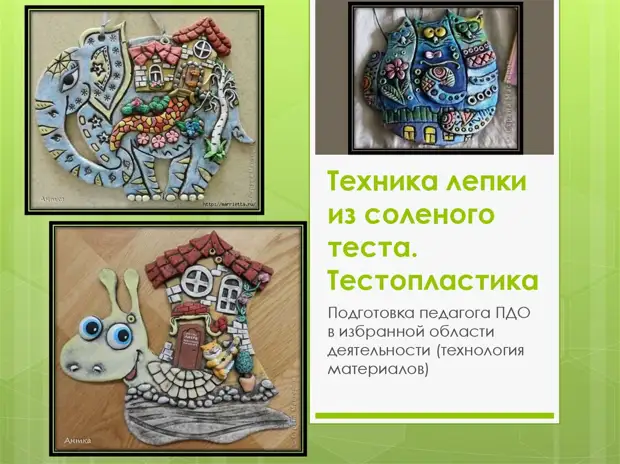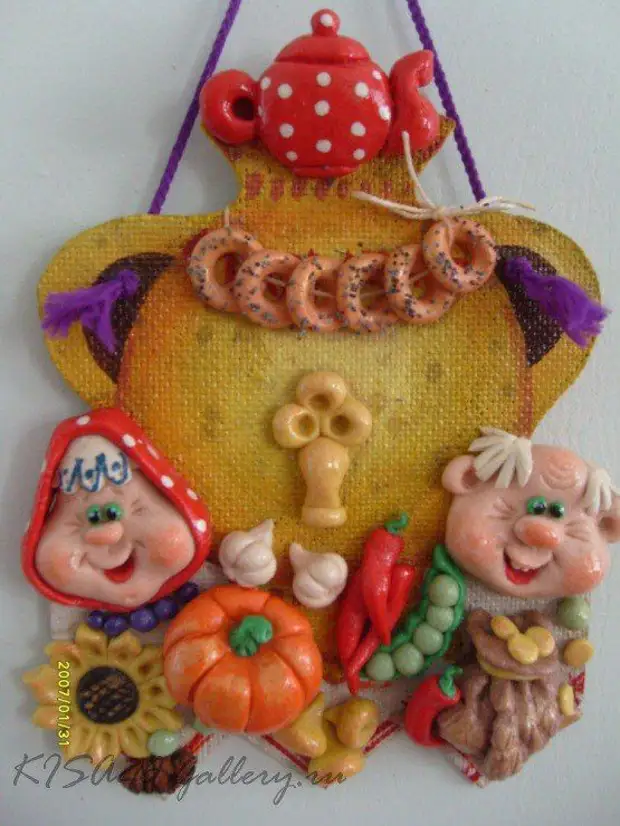
200 g = (1 cup) flour
200 g = (0.5 cup) salts (shallow, not stone).
125 ml of water
Please note that the salt is heavier flour, so by weight they are the same, and in terms of volumes, it takes about two times less.
For thin embossed figures, add to the choice:
15-20 g (tablespoon) plow adhesive or
Starch (tablespoon)
Glue for wallpaper (pre-stirred it with a small amount of water).
Strong dough for large products:
200 g of flour
400 g Soli.
125 ml of water.
Dough for thin work:
300 g of flour
200 g Sololi.
4 tbsp. Glycerin (can be purchased at the pharmacy)
2 tbsp. Adhesive for simple wallpaper + 125-150 ml of water to pre-mix.
For the knead, it is better to use a mixer - it will simplify the task, and the dough will get better.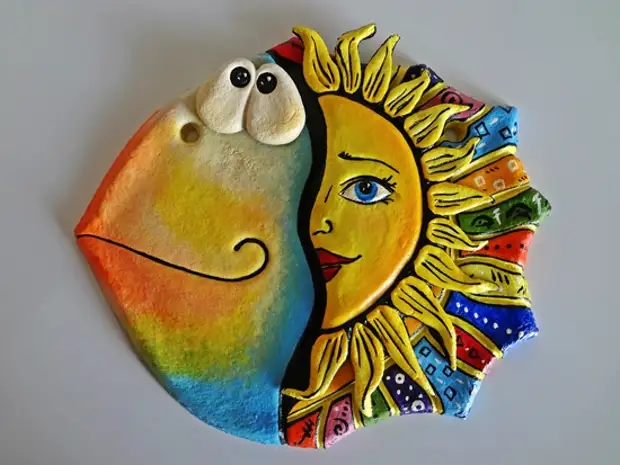
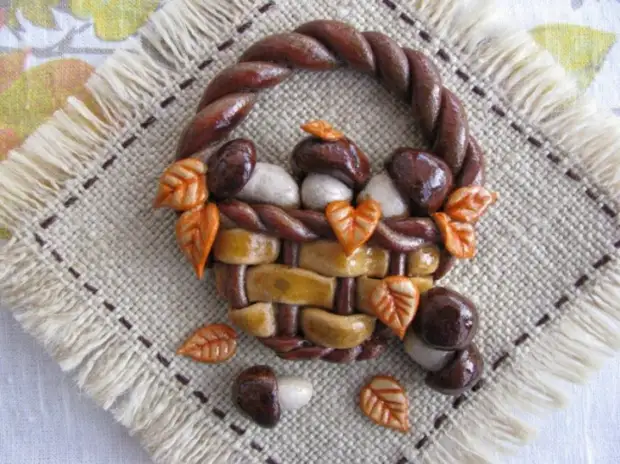
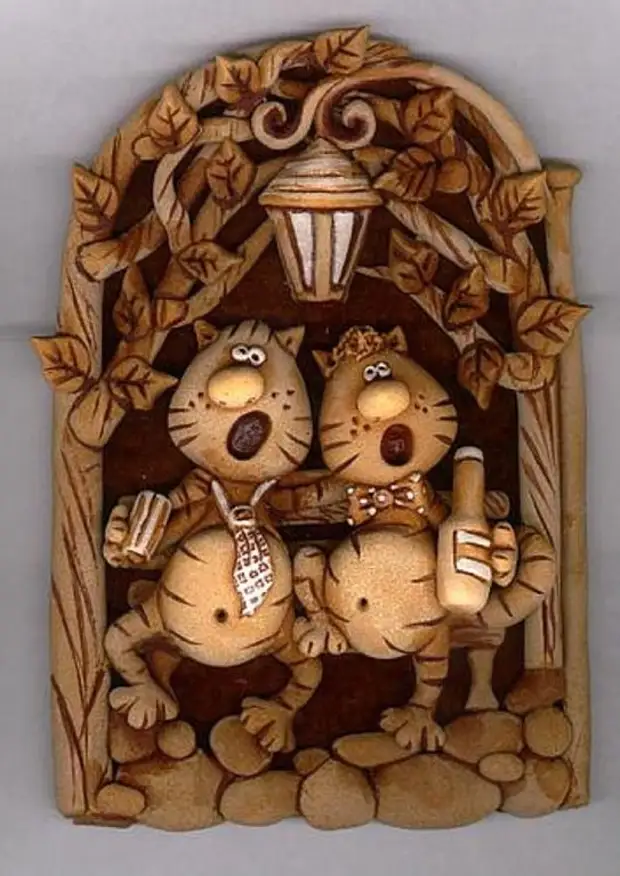
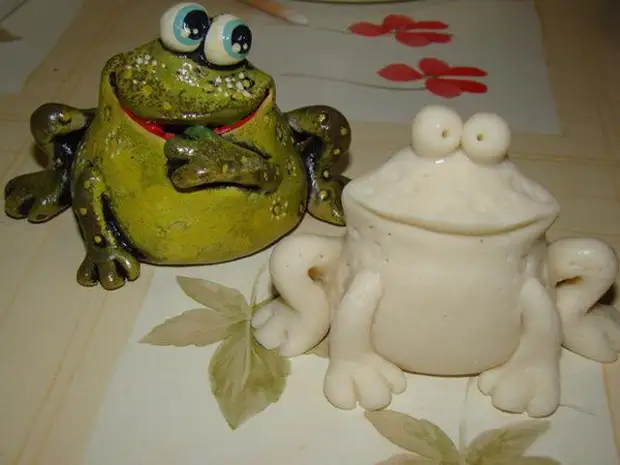
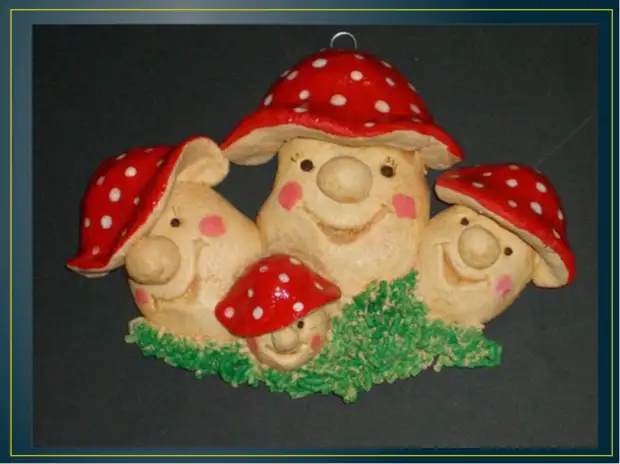
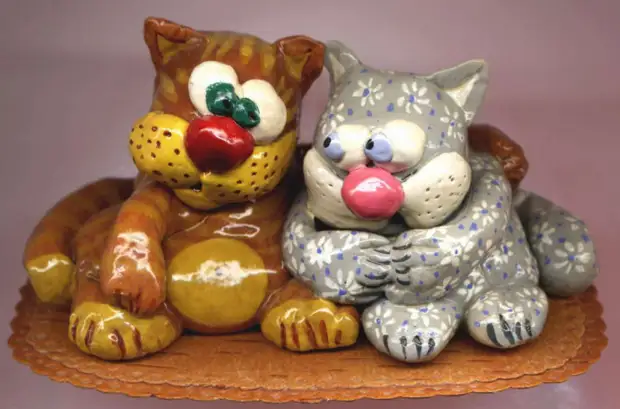
The origins of this type of creativity are rooted deep into the history of our culture. The same kolobok is an excellent artistic example of a salt dough product.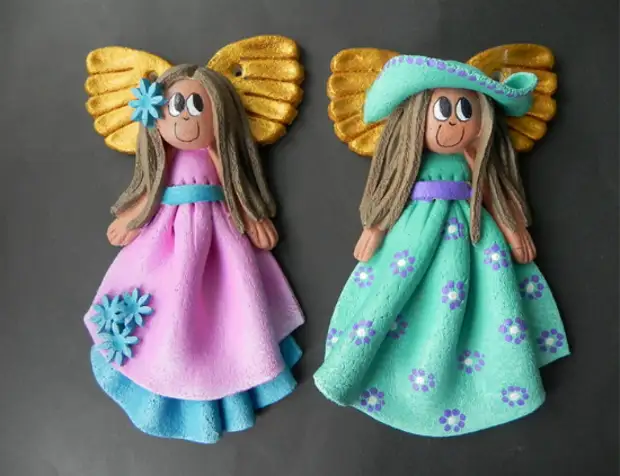
Work with dough for everyone. Surely you at home there is a handful of flour! In addition, the dough is much plastic than gypsum and rigidly plasticine.